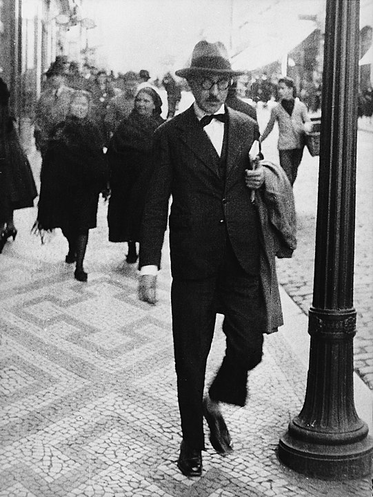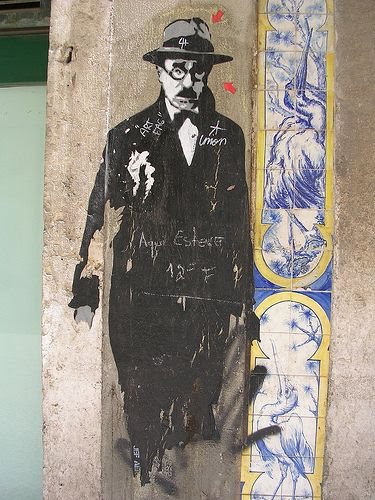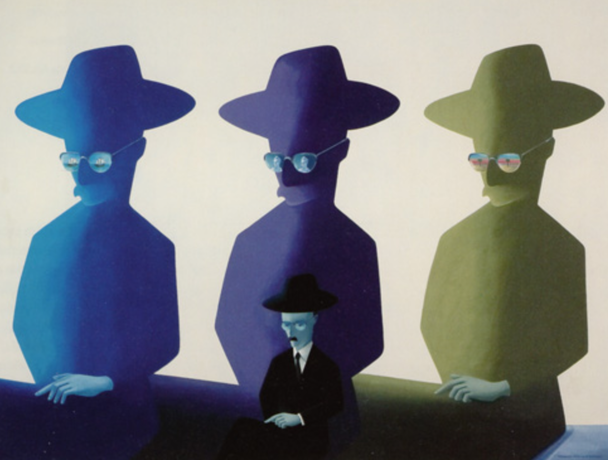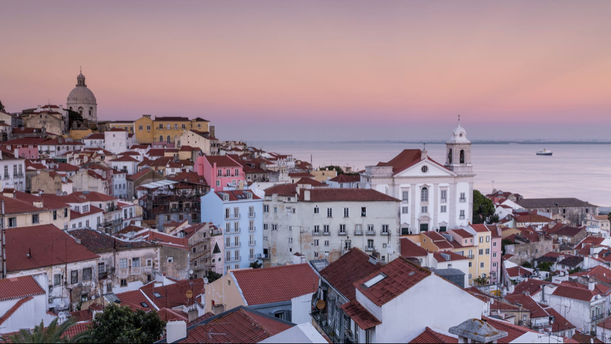|
The heteronyms by Antonio Costa Pinheiro from collection Calouste Gulbenkian Museum Lisbon skyline above the Tagus River A Chance To Breathe the Air of Poet/Philosopher Fernando Pessoa’s Cherished Lisbon
By Christie Seeley Vallartasounds.com After a disheartening 2021 during which I was compelled to cancel two trips to Europe, it looks like I may be successful this fall. I plan to spend a marvelous month living closely with the shadows of my favorite poet and thinker, Fernando Pessoa, and his many heteronyms in Lisbon, Portugal. At the end of August, Casa Fernando Pessoa, museum and last home to the great poet, will open a new area dedicated to Pessoa’s day to day life in Lisbon. With the help of Delta Airlines and Air France, I was able to utilize credits from the previous trips I canceled due to the arrivals of Covid-19’s various new faces. Together we created a comfortable itinerary for my flights. Airbnb furnished the rest. If all goes as planned, I will spend my month in this enchanting city reflecting on it’s beauty, it’s history and especially on its culture. My rented apartment is in the Principe Real district, a lovely 19th century residential neighborhood with a park right outside its front door. There I plan to spend leisure hours reading and planning each day of my adventure. As a preamble to my travels, I explored in depth Pessoa’s life and works. I read extensively about different periods of the history of Lisbon, not alway uplifting but essential to understanding the people and the culture. To help dispel some of the gloom, I enjoyed Jose Saramago’s innovative “History of the Siege of Lisbon” in which his protagonist, a respected editor, takes the liberty of altering one story-changing word to everyone’s eventual satisfaction. I also enjoyed films including the lovely rendition of “Night Train to Lisbon” based on the novel by Pascal Mercier which illustrates the cruelty of and the resistance to the infamous Salazar regime in a beautifully done work with Jeremy Irons as storyteller. I first learned of the poet Fernando Pessoa on a visit to the Calouste Gulbenkian Museum while visiting Lisbon in the 1980’s. Set in luscious gardens on the edge of town, the modern museum invited me into its sleek, light-filled interior. To my surprise, I found near the entrance a humorous and intriguing exhibit by contemporary Portuguese artist Antonio Costa Pinheiro honoring the life and works of the poet. Completely unprepared and understanding no Portuguese, my curiosity led me to investigate both the artist and the poet further. Fernando Pessoa was a strikingly complex man. Born in Lisbon in 1888, he received his early education in Durham, South Africa, where his stepfather was Portuguese Consul. He returned to Lisbon upon the death of his stepfather and never again left the city during his short life which ended in 1935. Much of his first writing was in English taking inspiration from William Shakespeare. Later, Pessoa developed many personalities or personae each possessing his particular identity and history. He called them heteronyms. Through them, he wrote significant works of poetry as well as essays, plays, and even dialogues amongst them. Alvaro de Campo, an engineer from Glasgow, was the most outspoken and unguarded of the heteronyms, often expressing shocking ideas in startling language. Ricardo Reís, an eloquent doctor, located in Brazil, was a classicist, and Alberto Caeiro, a zen-like naturalist, was admired by the others for his purity of thought. Bernardo Soares, a less proficient heteronym, was responsible for Pessoa's final tome, published posthumously, the Book of Disquiet. Fernando Pessoa "himself," still my favorite, was closer in style to Alvaro de Campo but certainly had his unique point of view. Walt Whitman was a writer he admired along with some of the French surrealists including Baudelaire. During his lifetime, Pessoa published only one book of poetry, Message (Mensagem), but kept all he wrote on whatever he could find at the moment in a trunk which was only recently opened and from which emerged the celebrated tome called the Book of Disquiet. When I first began looking into Pessoa, I could find nothing written in English about him. On a trip to Paris to attend an event celebrating Pessoa in 1985, I discovered an excellent bilingual book of his poetry in Portuguese and French called Fernando Pessoa, Poete Pluriel. I became a dedicated fan and read everything I could get my hands on to expand my knowledge. Much later thanks in part to the excellent scholar and translator Richard Zenith, his works became available in English, and by now, the world recognizes him as the force that brought Portuguese literature into the modern era. Lisbon now boasts a museum and statues celebrating his life and work. So, as long as Covid-19 cooperates, I will finally revisit Lisbon, this time with a greater understanding and affection for my literary hero Fernando Pessoa.
1 Comment
|
Christie SeeleyI am a writer who covers film, art, music and culture expanding on my own experience, travels and interests. My goal is to explore and to share, hopefully inspiring my readers to follow my lead and further enrich their lives as well. Archives
March 2024
Categories |




 RSS Feed
RSS Feed